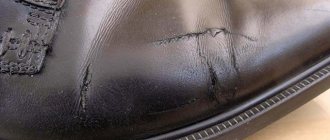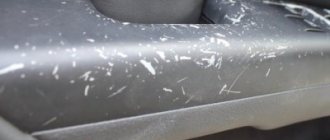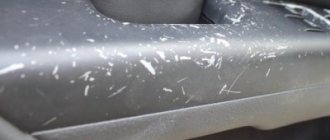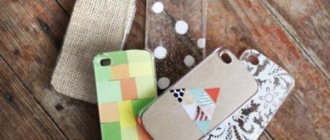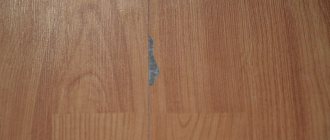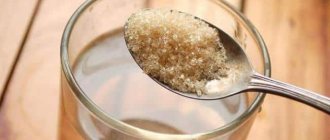A new smartphone always attracts the eye with its smooth and clean glass, but time passes and small abrasions and scratches appear on its surface, which spoil the whole look. After a year or two, you have to figure out how to remove scratches from your phone screen.
Especially if the owner did not take care of prevention in advance and did not apply a protective film. To return the display to its original appearance and get rid of defects, our tips will help.
The step-by-step instructions are universal and suitable for all models and brands: iPhone, Windows Phone, Alcatel, Asus, Lenovo, Meizu, Philips, Nokia, Oppo, Phillips, Prestigio, Sony Xperia, HTC, Samsung, Xiaomi (Redme), ZTE, BQ, Vertex, Micromax, Umidigi, Oukitel, Texet, Leagoo, Dexp, Doogie, Huawei (Honor), HomTom, etc.
Is it possible to remove scratches from a phone screen?
You can estimate the likelihood that a scratch on the screen will disappear without a trace by its appearance:
- the mark on the screen is noticeable only from a certain angle and cannot be felt to the touch - these signs indicate that only the oleophobic coating has been damaged. This means that the screen can be returned to its original state;
- the defect is felt when touched and visible from any angle - the glass itself has been damaged and such a scratch cannot be completely eliminated. It will only be possible to make it less noticeable.
Does your phone screen have scratches?
Not really
Furniture/car polishes
Polishes can be used both for their intended purpose and to remove defects from the screen. Users need to add a couple of drops of this product to a soft cloth and rub it into the smartphone display with massaging movements. The procedure should be carried out for several minutes or until the scratches are completely removed. If necessary, polishing can be repeated.
Advice! To avoid having to polish the screen in the future, you should stick a film on the display. This can be done both in the salon and independently (if you have the skills).
Basic removal methods
All screen restoration methods are divided into two large groups:
- Chemical. They are more gentle on the surface, but can flow inside the case and damage the device.
- Mechanical. If the technology is not followed, there is a high probability of damaging the screen beyond repair.
When choosing a method, you should consider the following rules:
- do not use caustic compounds based on acids and solvents;
- do not heat the screen and body of the smartphone;
- Do not use several methods at the same time.
You can find 6 simple ways to clean your phone (smartphone) screen here. Also learn how to clean your phone case from dirt and yellowness.
Preventive measures
How to protect your phone from scuffs and scratches? To do this, you can take some preventative steps:
- Use screen protector. Pros: thin, almost invisible coating. Cons: If the phone falls, it will not protect the screen.
- Buy protective glass. Pros: Much stronger protection. Cons: not all models have suitable protective glass; it is not scratch-proof.
- Buy a convenient phone case. Pros: ease of use, protection not only of the screen, but also of the entire structure. Cons: If dropped on the screen, it will not protect against scratches.
Traditional methods
Folk remedies are a simple and affordable method for polishing small scratches on a smartphone display. All of the listed compounds can be found in everyday use in every home.
Soda
Soda is successfully used not only for culinary purposes, but also to restore the appearance of a smartphone. This powder acts as a delicate abrasive that smoothes out uneven surfaces.
Baking soda can be used to polish the screen and smooth back of the device.
Instructions for using this composition are as follows:
- In a glass container, mix one part baking soda and two parts water. After thorough mixing, the result should be a completely homogeneous mass, reminiscent of thick sour cream in consistency.
- The prepared soda slurry should be applied to a cotton pad or a piece of soft cotton cloth.
- Immediately begin polishing the gadget screen. This must be done in a circular motion without using excessive pressure.
- Use a damp cloth to remove any remaining composition. It is important to ensure that liquid or particles do not get inside the housing. This can lead to much more serious problems than a scratch.
Vegetable oil
Vegetable oil will help get rid of only very minor damage to the screen. This method is accessible and cheap, however, the screen must be processed extremely carefully. Oil may leak into the holes and damage the internal components of the device.
The positive effect is achieved by filling small scratches and this result does not last long: after a few weeks the operation will have to be performed again.
To work with oil, you will need a soft microfiber cloth and a few drops of this liquid. Rub it over the surface in a circular motion until it disappears completely.
Important! Contact with oil may cause the body of the device to become very slippery. Therefore, it is better to perform this operation on a table, without holding the phone in weight.
Toothpaste
Toothpaste is often used to polish small parts; you can also use it on your smartphone screen. Any brand will work; it is only important to choose a classic consistency, and not a gel or foam format.
Working with toothpaste follows the same rules as polishing with professional compounds. Abrasive particles invisible to the eye polish the glass and eliminate minor scratches.
To work you will need:
- Apply a small pea-sized amount of toothpaste to the screen.
- Rub it over the surface in a circular motion using a soft cloth or cotton pad.
- Remove excess composition with a damp cloth after completing the procedure.
Baby powder
For polishing, use any dry baby powder. One teaspoon of this powder must be mixed with a few drops of water until a homogeneous paste is obtained.
The smallest particles of talc act as an abrasive in this product.
Polishing is carried out according to the usual rules: in a circular motion using a small piece of soft cloth. At the end of the work, excess composition should be removed using an alcohol-free damp cloth.
Egg, aluminum and potassium sulfate
Despite the complex name, all of the listed chemical elements can be found on the farm. You will need aluminum foil for baking and alum (potassium sulfate). The last element is sold in pharmacies. Algorithm of actions:
- One raw egg white must be mixed with one teaspoon of alum.
- Transfer the mixture to an aluminum bowl and heat to 65 degrees.
- Wet a microfiber cloth with the prepared mixture and place it on a baking sheet lined with aluminum foil.
- “Bake” the fabric in the oven at 120 degrees until it dries completely.
- Immediately after removing from the oven, place the microfiber in cold water for 20-30 seconds.
- Re-moisten with the mixture of protein and alum and place in the oven.
- Repeat the operation three times. Afterwards, let the microfiber dry for 48 hours.
- Use the cloth prepared in this way to polish the screen. This must be done in a circular motion without pressure.
What products do you prefer to use?
FolkSpecial
Baking soda
For polishing, soda is less effective than specialized products, but it is suitable for removing small scratches . It is necessary to prepare a mixture of soda and water 2:1, respectively, to obtain a paste. Next, the polishing process itself begins. Craftsmen recommend sealing all connectors and speakers before polishing. Residues are removed with a damp cloth.
Mechanical means
Mechanical processing should be used extremely carefully, as there is a high probability of damaging the surface even more.
Sandpaper
To work, you will need sandpaper marked “0”. This option has a minimal level of abrasiveness and allows you to delicately polish the surface.
Algorithm of actions:
- Place a small piece of sandpaper on the screen and perform circular movements without unnecessary pressure.
- Finish polishing with baking soda or toothpaste.
- Clean your phone screen with a napkin.
When used correctly, sandpaper works just as well as a polishing machine and helps hide even large scratches.
Important! The wrong choice of abrasive or excessive pressure will lead to irreversible damage to the screen.
Drill with felt roller or sander with special attachments
The grinding function on the listed devices can increase the efficiency of chemical application.
If all requirements are met, this method can be used in conjunction with others or used as a final step.
To work, you will need to fix the gadget on a solid base and select a nozzle with soft felt for polishing. The work must be done smoothly, without putting pressure on the screen.
Due to the high speeds, the effect of the polishing tool cannot be compared with performing a similar operation manually.
Paste GOI
This paste was widely used in the USSR, but even now it is a popular means for polishing glass products . You need to add the required amount of paste to the soft material and rub it into the screen for several minutes. Residues of the substance are usually removed with water, but the most effective way is to use kerosene for cleansing.
Advice! It is advisable to buy GOI paste in stores, because... in markets it is often of poor quality.
Advanced Tools
If the damage is serious and folk remedies are not enough, then you should use professional preparations for polishing and removing scratches.
Professional products
Using this method, you can remove minor scratches and return the screen to its original condition. Such preparations restore the oleophobic coating and cannot damage the screen. Step-by-step instructions for operation:
- Clean the screen thoroughly using an alcohol wipe. It is necessary not only to remove all visible dirt, but also to degrease the surface.
- Use a non-absorbent glove on your hand or protect your skin with a regular plastic bag.
- Apply a few drops of the product directly to the screen and spread evenly over it using your fingers. It is important to do the work as quickly as possible, since the composition instantly evaporates upon contact with air. Do not press or rub the liquid into the screen, just apply it evenly to the surface.
- Leave the gadget to dry completely for 8-12 hours. During this period, you should not touch the screen to avoid damaging the newly created oleophobic coating. It is most convenient to carry out this procedure before bedtime.
- Wipe the screen and phone body with a soft microfiber cloth to remove any remaining product. You can use your smartphone.
Car polish
Car body care sprays and creams will help deal with minor damage to your smartphone screen. Their main purpose is to gently act on the surface without causing additional damage.
The work is done using a soft cloth and a few drops of polishing compound. The drug must be applied directly to the screen and distributed evenly using circular movements.
The effect of use becomes noticeable even during operation, all damage disappears or becomes less noticeable.
At the end of the work, the screen must be wiped with a damp cloth or alcohol-free wipe.
Paste GOI
This polishing composition was created back in 1931, but is still used successfully today. The greatest effect from its use can be achieved when applied to glass and plastic.
The paste can easily return the screen to its original shine and eliminate minor scuffs. However, she is unable to cope with deep damage.
Goi paste is produced in the form of a briquette, from the contents of which it is necessary to cut off a thin plate before starting work. It should be placed on the screen and moved across it in a circular motion without pressing.
Before starting work, it is advisable to seal all the holes on the phone with tape so that particles of paste do not get into them. Upon completion of work, wipe the screen with a damp cloth and, if desired, restore the oleophobic coating using a special product.
Reference! When working with the paste, it is necessary to cover the entire surface of the screen so that there is no difference between the treated and untreated areas.
Displex
This tool is used by service center employees when a client contacts them with the need to restore a screen. The composition can be used both for glass and for other materials: metal, several types of plastic.
During application and distribution over the surface, it fills small scratches and hardens to form a hard polymer film. The result is an absolutely smooth, like new screen without damage.
Displex comes in the form of a paste in a tube and allows you to get rid of even deep scratches. The only drawback of this composition is that when used on the body, the color in damaged areas is not restored. This effect is absolutely not noticeable on the screen.
Advice! You will need less than one drop of product to work. It must be rubbed only using lint-free microfiber cloths. Reusing the cloth is unacceptable, as the hardened paste can scratch the surface.
Chemical mixtures
In a jewelry workshop you can find such a product as cerium oxide or CeO2. This substance is used to polish precious metals. There are also polishes for car paintwork that contain large amounts of this substance in the composition.
It must be used by analogy with other polishes:
- apply only to a clean surface;
- rub in circular movements without pressure;
- remove residues with a napkin after finishing work.
Abrasives
Ready-made abrasive compounds will successfully replace products made from available ingredients: soda, powder, toothpaste. All of them are available in a convenient paste or cream form and you need to choose them based on the least abrasiveness. When working, you must use a soft microfiber or felt circle. Diamond paste has the best polishing effect.
Optical glue
Optical glue is not intended for joining objects, but for removing scratches on smooth surfaces. This substance can be sold under various trade names and brands.
The principle of using this composition is the same for any brand:
- Clean the screen surface from dirt.
- Protect the edges of the gadget from glue using paper tape. It is much more effective to stick tape around the perimeter of the scratch so as not to apply glue to the rest of the surface.
- Drop a small amount of glue onto the damaged area and immediately remove it from the screen using a plastic card or a special scraper. The liquid will fill the scratch and harden into it, giving it a smooth finish.
- It may take about two hours to dry. The manufacturer indicates the exact information on the packaging.
Reference! You can remove excess glue from the screen using nail polish remover. After this, you will need to restore the oleophobic coating again.
A couple more good tips
- Use one-color toothpaste, without pigments or abrasive additives.
- Lightly moisten soda, talc, and other powdered mixtures with water before use.
- When working with oily, dry compounds, do not allow them to penetrate inside the device.
- GOI, Displex - specialized products for eliminating scratches on phones and displays. The action of the mixtures is gentle and does not harm perfectly smooth surfaces.
- Mechanical polishing methods are the most dangerous and are used with extreme caution.
There are many ways to clean and polish the smooth screen of your device with your own hands. However, damage is easier to prevent than to fix. Therefore, we recommend that immediately after purchasing a phone, you purchase a case, cover, glass, and other protective equipment. A large selection of these and other accessories for mobile gadgets is available in our HokoRus online store. A complete list of products in this category can be found by following the link.
What to do with cracks?
A crack in glass cannot be repaired by polishing or any other method at home. The only way out of the situation is to contact the service center. Specialists will completely replace the glass on the screen and restore its functionality. The same rule applies to large scratches and chips.
Advice! You need to contact professionals as soon as possible. Through a deep crack, water and dirt can get inside the gadget, causing it to break and stop working.
Attempts to repair a phone or tablet yourself and replace the screen rarely lead to a positive result. To achieve it, you need to know the device's structure and have a full set of special tools to perform all operations.
Independent work
There is no specific answer about the safety and advisability of independent work. The quality and result directly depend on the condition of the phone, what types of damage are present on the screen, as well as their number. This issue is a responsible matter that requires a skillful approach and sleight of hand.
If you don’t have the necessary tools to repair scratches or you doubt your abilities, you should contact a professional service center or workshop.
What are the most common causes of damage?
The main cause of damage is external influence. Most of them are obvious at first glance:
- Dust, dirt and small grains of sand are the main cause of damage to the screen. All of them contain quartz, which easily scratches the coating with sharp edges. This type of scratches appears especially often in the warm season, so you should pay special attention to caring for your phone;
- accessories on clothes: zipper, buttons, rivets. Scratches often appear among those who like to carry their phone in the back pocket of their jeans or jacket;
- rings, bracelets, watches and other elements. For example, the screen is damaged when carrying the device in your pocket along with your keys. Girls can damage the glass with earrings when talking. In order to avoid this trouble, you should not press the device tightly to your ear during a conversation;
- gadget storage accessories. Various stands themselves cannot damage the device, but dust and dirt accumulating on them act as an abrasive and scratch the surface;
- long nails. When typing, such a manicure inevitably scratches the surface and deteriorates over time. Decorating your nails with rhinestones and stones can cause severe damage in just a few days.
Important! To ensure that your phone case does not cause scratches, it must be regularly cleaned of dirt.
General recommendations
Before you use homemade products with which you plan to repair damage to the gadget’s touch screen, you need to determine the material from which it is made, most often it is glass or plastic. This information can be found in the instructions that came with the device or on the manufacturer’s official website. Once the composition is determined, you can select the ideal product for grinding the damaged surface.
In addition, it is worth paying attention to other factors, for example, whether the mobile device has an oleophobic coating. Such surfaces cannot be processed, as they will damage the film. So that in the future you do not have to waste time and effort on filling scratches, you need to follow some operating rules, they are as follows:
- When purchasing a phone, it is better to be on the safe side and immediately install protective glass;
- Clean and polish the screen surface regularly;
- Make sure that the display does not collide with sharp objects; for reliability it is better to use a case.
Following these basic recommendations will help not only maintain the beautiful appearance of the device, but also significantly extend its service life.
How do you like the article?
How to prevent scratches?
The best way to prevent scratches is to take good care of your smartphone. To do this you will need to adhere to some specific rules:
- never throw your phone, even on a soft surface;
- Always place the device with the screen facing up;
- do not carry the gadget in your pocket or together with other items;
- Do not place the device on the edge of a table and avoid other situations where it could fall;
- Always use covers and protective accessories. Regularly clean them of dirt;
- Carry microfiber cloths with you and wipe the screen more often;
- use a special separate pocket of a bag or backpack to move the device;
- do not use the gadget on the go.
All the described methods will help get rid of scratches and small chips on your smartphone screen. You can do them at home without resorting to the services of professionals. If you follow the rules for performing operations, all the methods described are safe and do not harm the device.
Learn how to clean your phone's charging socket at home, as well as how to clean a clear silicone case.
Will the service center help?
If the device’s warranty service has not yet expired, in such a situation you should contact the warranty repair service. In this case, the damaged elements will be replaced and the refurbished phone will be returned to you. If the service repair period is past, the process of replacing the screen panel can cost a pretty penny.
Important! As a rule, the service center is reluctant to undertake to eliminate such defects for free, so they often try to recognize the owner as the culprit for the appearance of defects. In this case, you will need to pay to replace all parts. Based on this, this option is not advisable. But it’s still worth applying - maybe you’ll be lucky.
So, if the service center refuses to repair you, then you need to study information about how the screen in your device works. After receiving the necessary information, you can choose a more suitable method for removing a chip on your phone. If this is not done, your desire to get rid of unwanted flaws may make the problem even worse.


